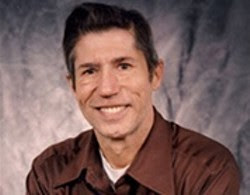A few years ago Making a Murderer, a docuseries featuring the story of Steven Avery, premiered on Netflix. Steven Avery spent nearly two decades in prison for a rape he did not commit, only to be released and then convicted of killing photographer Teresa Halbach just two years after his release. Avery, along with his suspected accomplice, his 16-year old mentally disabled nephew Brendan Dassey, were sentenced to life in prison, without possibility of parole.
The show presented the
case’s evidence and information, included interviews with those
involved–including attorneys and members of the Avery and Dassey families–and
included footage from Avery and Dassey’s police interrogations and trials in
2006 and 2007. The series presented the case as mishandled, from an
apparently corrupt sheriff’s department to seemingly incompetent attorneys to
the possibility of evidence manipulation by police officers; Making a
Murderer left the viewers questioning Avery and Dassey’s guilt.
The footage of the
police’s interrogation of Brendan Dassey was especially concerning, as you
could clearly see that Dassey was coerced into admitting guilt, even at one
point explicitly told that if he told the officers what they wanted him to say,
he could go home and watch his favorite show, WrestleMania. Dassey,
then, told the officers that he helped his uncle kill Halbach; he subsequently
was put into handcuffs, and removed from the interrogation room.
After watching the
episode with Dassey’s interrogation, I got ready to go to sleep when all of a
sudden I inexplicably broke into tears. I walked into my parents’ room, now a
sobbing mess, and cried for Brendan Dassey. At the time of his conviction, he
was only 16; the same age I was watching the show. I declared that he was
clearly coerced and that his conviction was completely unfair. I imagined him,
sitting in a jail cell for the rest of his life, his entire future now taken
from him. He was just a kid–I imagined myself in his situation and continued to
cry until I became exhausted and fell asleep.
The most upsetting part of
Avery and Dassey’s cases is that similar outcomes are not rare, as people are
convicted of crimes they did not commit much more often than one would like to
think. The causes for wrongful incarceration vary, but no matter the reason,
one thing is clear: The American justice system has failed far too many
innocent people. Because it is impossible to definitively know whether a person
is telling the truth or not, it is impossible to have an accurate statistic on
just how many people sit behind bars for a crime they did not commit.
After watching Making a Murderer and researching countless similar stories, one thing became clear: Our justice system needs
reformation. Our justice system needs to convict those who are guilty–not those
who are innocent. Our justice system needs adhere to its name and act justly.
No reform will ever be
able to completely eliminate wrongful convictions because no system is perfect,
but that should not mean that nothing can be done. The most effective and
realistic reform for the American justice system is publicity for the
wrongfully convicted, just like Netflix did for Steven Avery and Brendan
Dassey–Making a Murderer garnered so much attention that a high profile
lawyer has now volunteered to defend Avery.
Attention and publicity are achieved by spreading the person's story,
forcing the public to recognize that this is an issue
that occurs on a much larger scale than is perceived. These reforms will not
happen overnight; there is a long road ahead for the wrongfully convicted.
Prisoners are often forgotten, and society’s trust in America’s justice system
allows for this. In order for effective reform to occur, America must recognize
the faults of the criminal justice system and fight for the lives of the
wrongly convicted prisoners behind bars.



